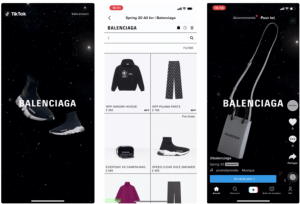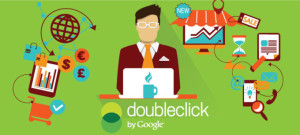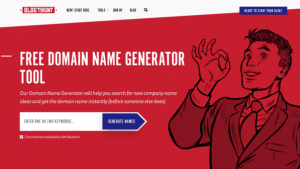We want other people to like us. It’s a human desire.
We also want other people to like our websites. If, on our site, we come across as likable, we tend to become more profitable.
So, in conversion optimization, likability is an important and powerful psychological trigger.
Likability is nebulous, though. What’s it mean and how can we optimize for it? How can we measure it?
What Does It Mean To Be Likable?
What is it to like someone or something? This is an important question, and as Conversion Consultant Jeremy Smith mentioned in a blog post, the definition itself is self-referential: “pleasant, friendly, and easy to like.”
The principle of likability, though, at least in terms of persuasion, was popularized by our social psychology icon, Dr. Robert Cialdini.

According to Cialdini, it’s a very meaningful persuasion trigger, affecting the chances of you influencing someone else. In his context, liking can be based on a few factors: how similar you are to someone, how attractive a person is, if you like their smile, or a variety of other factors. Again, it’s quite nebulous, especially when you get into in-person persuasion and charisma (so many books have tried to define this and it’s still not well understood).
Cialdini actually outlined what he considered the five factors that go into Liking:
- Physical attractiveness
- Similarity
- Compliments
- Contact and Cooperation
- Conditioning and Association
I actually think there are other factors that don’t totally fit into these five factors, such as humor, utility/usability, and transparency, which I’ll also outline with examples below.
How Do You Measure Likability?
Just as it’s hard to define likability, it’s difficult to measure it as well. There are, however, proxy metrics you can use, most of them older school metrics like brand mentions, satisfaction scores, and some newer ones like social media mentions and followers, email subscriptions, referrals, and NPS.
Jeremy Smith also outlined a few outcomes that could happen if people like you:
- They talk about you.
- They follow you on social media.
- They refer their friends to you.
- They buy from you.
- They keep buying from you.
- They spend time on your website.
- They subscribe to your email list.
- They read your blog.
- They generate content for you.
There are various ways to measure the above outcomes, and there are varying levels of correlation with revenue, retention, and whatever, but they’re all generally good signs.
For the sake of simplicity, and because we’re seeking to optimize websites, let’s measure revenue and conversion increases as a proxy for “liking,” deal?
There Are Many Ways to Be Likable
Here are a few of them with some examples to illustrate.
1. Be Attractive
We published an article on beautiful people and websites a while ago. It turns out there’s a lot of research that says both beautiful people and beautiful websites (arguably irrationally) get better outcomes in a variety of contexts.
There’s absolutely no question that advertisers have been using beautiful people to sell their products for decades. A few products in particular come to mind, like perfume, clothing, and alcohol.
And of course, it has been pretty empirically supported that using attractive models is effective.

I recently discussed this phenomenon in my article on the Halo Effect, where one trait of someone/something influences how you feel about other, unrelated traits. The most famous iteration of this effect, of course, being attractiveness as a proxy for value.
Sometimes it’s not about putting scantily dressed models on your homepage, though. It could just be about beefing up the professionalism of your design. Design is important; people like beautiful design. It’s not the only thing that matters in terms of conversion optimization, of course (could you imagine if we only made changes based on the “beauty” of a design?). And trends change, of course – what’s beautiful is subjective and in flux.

But people tend to like “clean” looking design, simple and elegant. It brings the association of a luxurious experience.
When in doubt, I’d usually go for simple. In a 2012 Google study, researchers found that not only will users judge websites as beautiful or not within 1/50th – 1/20th of a second, but also that “visually complex” websites are consistently rated as less beautiful than their simpler counterparts.
It still holds pretty true today.

Listen, though: this isn’t to say beautiful websites always perform best. That’s not true. In fact, the Halo Effect goes both ways – you could be limiting your testing program by ruling out variations that aren’t ‘beautiful enough.’ It’s about what works, not what’s prettiest.
2. Be Similar
That’s also why customer research is so important – you want to calibrate your messaging with what your audience relates to and will respond to.
Dr. Rob Balon told me a story about one of his consulting clients, a very high tech firm with a complicated technical product. They used a very creative and conceptual design in one of their ads, something 180 degrees away from what left-brained engineers would likely respond to.
Not only that, but they used a young, model-looking dude in a sharp suit in their ad. In a focus group consisting of target customers, everyone said something along the lines of, “I don’t know anyone like that!”

Would this resonate with your target audience?
Their target market was highly technical, highly logical buyers. The messaging and creative was so off the mark that it produced a backfire effect. No bueno.
As for a good example, note how Unbounce features a photo and testimonial from an actual customer, someone who likely fits their customer persona (marketers, agency owners, etc.).

We like to identify as being part of a group, and in turn, groups can define our personal identities. I wrote about this in an article about Cialdini’s new 7th principle, Unity. It’s important to call these associations into play to appeal to the more emotional, fast-brain side of decision making.
3. Give Compliments
It’s really difficult to resist the allure of a compliment, even if you know that it’s being used to persuade you.
So, it’s tough to do this at scale, right? At least in terms of an eCommerce site. But there are a few ways I’ve seen it done, mostly at the level of apps trying to become habit-forming products.
Here’s Codecademy, who sends an email when you reach certain milestones or code more than 1 day in a row:
![]()
Duolingo and other sites relentlessly pursuing Daily Active Users tend to employ similar tactics.
I’ve also noticed a trend towards user generated content in apparel brands. It’s not necessarily a one-on-one compliment, but it makes the customer feel special and invested in the brand. A part of the brand, really.
Chubbies does this well, inviting users to submit photos of “The Look” and then captioning the photos with funny copy:

Social media is really the perfect place for a brand to give out genuine compliments, and actually to pursue Likability holistically.
4. Contact and Cooperation
Contact and Cooperation is the sense of commonality we feel when we work with other people towards a common goal. As such, it also has quite a bit in common with the Unity Principle previously mentioned, with a few differences.
First, this principle invokes the IKEA Effect, where you value something more if you had to put it together (or if you expelled effort in consuming/using the product).
Have you ever donated to a Kickstarter campaign? Granted, you have to like someone or something quite a bit before you ever pull out your card to donate, but there’s certainly a sense of pride when you donate to campaign that gets funded. It becomes bragging rights, because YOU were part of that process/success.

In addition, Contact and Cooperation also involves what a brand stands for. While standing for something is risky (or brave, depending on your perspective), we also respect people for doing so and often support them with our dollar billz.
An example I personally find egregious is the misguided but fervent support that many people showed Chick Fil A after their whole anti-gay-marriage thing.

A more inspiring example is the fact that Toms’ business is predicated on a one-to-one model where, when you buy a pair of shoes, they give a pair to a kid in need. As you’ve probably noticed, the popularity of their brand inspired many other companies to adopt similar methods.

In fact, social entrepreneurship has been on the rise, a trend that, regardless of the execution, I think is generally a good thing. It’s nice spend your money in a way that benefits you as well as the world (or at least doesn’t harm the world). It’s why I like going to Whole Foods even though Trader Joe’s is drastically cheaper:

Whole Foods’ mission and values
5. Conditioning and Association
Sometimes, we’re conditioned to liking a product because of its association with something else. This can be by accident or by design. Essentially, this is branding, which itself has a hazy connotation, especially in our data-driven world.
It’s hard to deny the power of advertising outright, however, no matter how tenuous our brand measurement and ROI measurement is in reality.
This isn’t an advertising class, so I won’t give too many examples, but just think about how much money Apple poured/pours into trying to be associated with “rebellious,” “creative,” or “luxurious.”

Think about what a brand is doing when it features a famous person’s testimonial on their homepage. Or consider how you may perceive a brand differently if you know its founder is Jay Z, Jessica Alba, or someone else who already brings strong associations with them.
This association building can also be seen in the rising trend of influencer marketing, which includes my favorite phenomenon, dogfluencers like Doug the Pug:

6. Be Funny
Using humor isn’t a silver bullet. Humor can clearly backfire (especially when it’s in poor taste).
But it’s a pretty safe bet to say that if you’re funny, it makes you more likable – at least on an interpersonal level. The same can be true for brands and products – why else would creatives and copywriters continue to pump out ads like this?
Some companies are totally predicated on humor, like BustedTees, who product-wise and message-wise, is undeniably funny. Being funny is also a good way to make a boring brand likable, like Geico, GoDaddy, or Progressive.
Chubbies is also awesome at humor. They encourage customers to submit photos on social media and then turn around and post them with funny captions.

They also produce videos like this:
And they write product copy like this:

It also turns out that social media is a wonderful avenue to inject humor, even if it’s not a facet of all of your marketing materials, like your website and advertisements. I’m a big fan of Taco Bell’s social media game:

Again, I don’t want to downplay the ambivalence of humor in marketing: it might not be right for your brand. Home security, enterprise subscription management software, or a management consulting firm probably wouldn’t benefit from humor, and in fact, using humor would likely turn off potential customers.
7. Be Transparent
People like authenticity. And if your brand isn’t hiding some crazy, business-ruining secrets, they like transparency. Makes ’em feel like they’re part of the movement.

In fact, this principle is commonly spouted in the political realm, represented by the phrase “it’s not the crime, it’s the cover-up.”
Also consider these points:
- Transparency is a key component of what makes people like and respect a leader.
- Transparency in copywriting tends to work better than vague, clever copy, or hype-y language.
- Admitting your weaknesses is a powerful strategy in rhetoric (as seen in sales letters, classic ads, and Eminem’s last rap battle in 8 Mile).

When James Altucher pens a blog post titled “I Don’t Know How to Be a Good Father,” you can’t help to be drawn towards this level of radical honesty.
So, in public relations, branding, and in a newer trend, online marketing and business operations as a whole, transparency tends to be a compelling feature. If you’re not a hate-able company, I can’t see transparency doing much harm in terms of your brand equity.
8. Be Useful/Usable
When it doubt, simply be incredibly useful and helpful. Or at least eliminate bugs and usability problems that cause frustration (the opposite of an enjoyable experience).
There are really a million different ways to execute this, and it really depends on your specifics. That’s where the importance of usability testing, customer research, and segmentation comes into play – as well as good customer service.
I’ll just give you one example, because it really impressed me and I’m now a very loyal customer of Bonobos because of it.
I had a pair of jeans that started to fray, and it was only a few months after I purchased them, so I sent customer support an email. Here’s part of the response:

No questions asked! Happy “Thor’s-day”! This is great service from an insanely likable brand.
How To Be an Insufferable Brand
Maybe more important than trying to optimize your site to be likable is simply to avoid being “dislikable,” which is sadly far more common than insanely likable brands. How do you become an insufferable brand? Well, think about the things that you hate when dealing with different products and services…
- Introduce customers at a low rate then switch to high prices and fees when they’re not paying attention (cable companies, anyone?)
- Blame the customer when things go wrong
- Hide crucial information to try to maintain knowledge asymmetry (this paradigm is slowly fading away, but still not gone).
- Make it impossible to cancel your account without calling a customer support line (oh, and make that contact info really hard to find).
You get the point. There are many things companies do that, according to the data, probably looks like the right move. I have no doubts that making it hard to cancel an account increases retention and revenue, but there’s a cost. I’m going to recommend everybody I know not to buy your product.
I guess the point of this section’s semi-rant is to optimize for the long term, and balance brand equity and loyalty with short term metrics to maximize Customer Lifetime Value and retention – the really important metrics.
Conclusion
All else equal, a likable brand is going to beat an unlikable brand. Just as in real life, though, being likable online is as much art and execution as it is science and theory. Some common factors of being likable, though, include:
- Physical attractiveness
- Similarity
- Compliments
- Contact and Cooperation
- Conditioning and Association
- Humor
- Transparency
- Utility/Usability
However, maybe more important than being likable (a common domain of branding, positioning, PR, or social) is to avoid being unlikable (which is highly optimizable online). Start with solving user frustrations and making it enjoyable to do business with you.
Business & Finance Articles on Business 2 Community(88)









